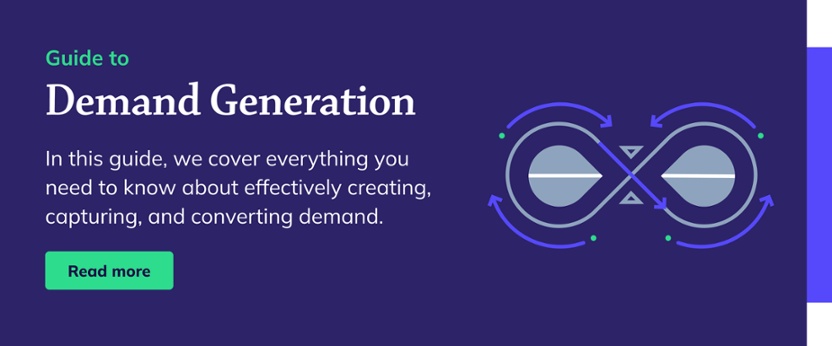Lead generation alone isn’t enough for successful marketing. It’s about understanding which leads are most valuable and how to get more of them. That’s where the split-funnel analysis comes in.
What is a split-funnel analysis?
A split-funnel analysis separates leads that have converted through lead generation campaigns and leads that have converted on high-intent forms. You can use it to analyse how many opportunities and customers were produced by your lead-generation campaigns compared to high-intent forms.
It reveals that leads who submit your high-intent form convert into opportunities and customers at a much higher rate. Even if there are fewer leads overall. On the other hand, whilst you can generate lots of leads through lead generation campaigns, they don’t convert effectively into opportunities and customers.
This data will help you make a case for inbound demand generation, which is a strategy focused on creating more high-intent form submissions.
Why should you split the funnel?
As marketers, it’s easy to fall into the trap of grouping all leads and marketing qualified leads (MQLs) together without analysing their conversion further down the funnel. This leads to wasted time and resources on generating leads that are unlikely to convert into opportunities or revenue, resulting in zero return on investment.
1. Identify leads that convert
MQLs that explicitly express interest in your product or service are more likely to convert into paying customers than those who download gated content or attend a webinar. However, when all MQLs are lumped together, it’s difficult to differentiate between the two. By analysing the performance of each channel separately, you can identify which leads are most likely to convert and focus your efforts accordingly.
2. Understand where your best leads are coming from
Splitting the funnel enables you to pinpoint exactly where your best converting leads are coming from, so you double down on these areas and allocate resources more effectively. On the other hand, you can identify areas where leads are generated in high volumes but don’t convert further down the funnel, allowing you to invest less time and money in these areas.
3. Obtain decision-making data
If you’re looking to convince yourself or stakeholders that some marketing channels may be ineffective, a split-funnel analysis provides you with reliable data that can drive change.
Ultimately, split-funnel analysis provides valuable insights into the effectiveness of your marketing efforts, letting you optimise your strategy and drive greater ROI.
How to conduct a split-funnel analysis
There are several ways to split the funnel depending on the technology available to you. The most effective, universal method is to use a spreadsheet and manually collate the data.
Instructions:
Step 1: Outline your sources
The first thing you need to do is outline your lead sources. This should include every channel that generates leads for your business.

Step 2: Leads by source
Count how many leads were generated by each source and populate the cells accordingly.

Step 3: MQLs by source
Count how many MQLs were generated by each source and populate the cells accordingly. In the next column, calculate the conversion from Lead to MQL.

Step 4: Opportunities by source
Count how many Opportunties were generated by each source and populate the cells accordingly. In the next column, calculate the conversion from MQL to Opportunity (Next Step Conversion) and the conversion from Lead to Opportunity (Cumulative Conversion).

Step 5: Customers by source
Count how many Customers were generated and calculate how much closed-won revenue was generated by each source. In the next column, calculate the conversion from MQL to Opportunity (Next Step Conversion) and the conversion from Lead to Opportunity (Cumulative Conversion).

What are you waiting for?
A split-funnel analysis is a critical report to maximise your ROI. It lets you identify which channels and tactics are most effective at generating high-quality leads, and focus your efforts accordingly. This not only improves conversion rates but also allows you to allocate resources more effectively, avoiding wasted budget on low-quality leads.
So, if you’re not already using split-funnel analysis to report on your marketing efforts, it’s time to start now.





